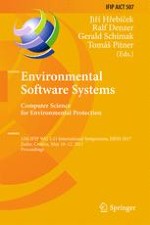2017 | OriginalPaper | Chapter
UNISDR Global Assessment Report - Current and Emerging Data and Compute Challenges
Authors : Nils gentschen Felde, Mabel Cristina Marulanda Fraume, Matti Heikkurinen, Dieter Kranzlmüller, Julio Serje
Published in: Environmental Software Systems. Computer Science for Environmental Protection
Publisher: Springer International Publishing
Activate our intelligent search to find suitable subject content or patents.
Select sections of text to find matching patents with Artificial Intelligence. powered by
Select sections of text to find additional relevant content using AI-assisted search. powered by
